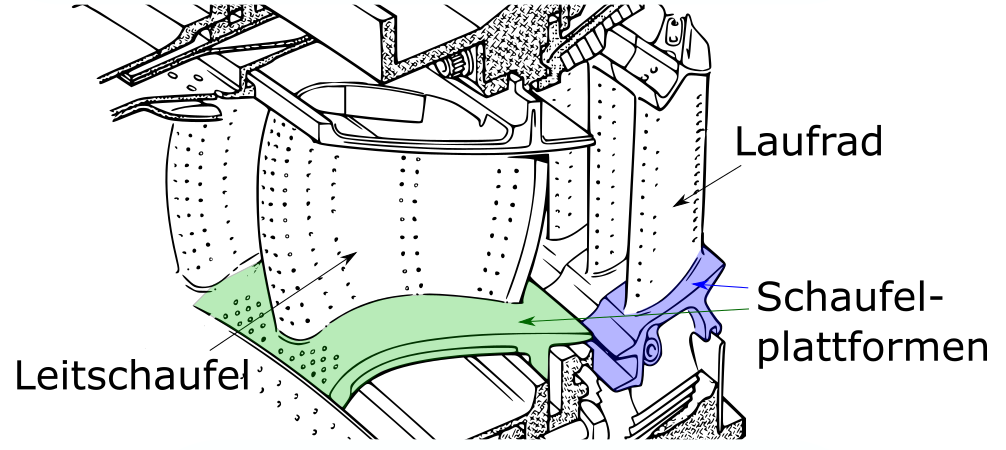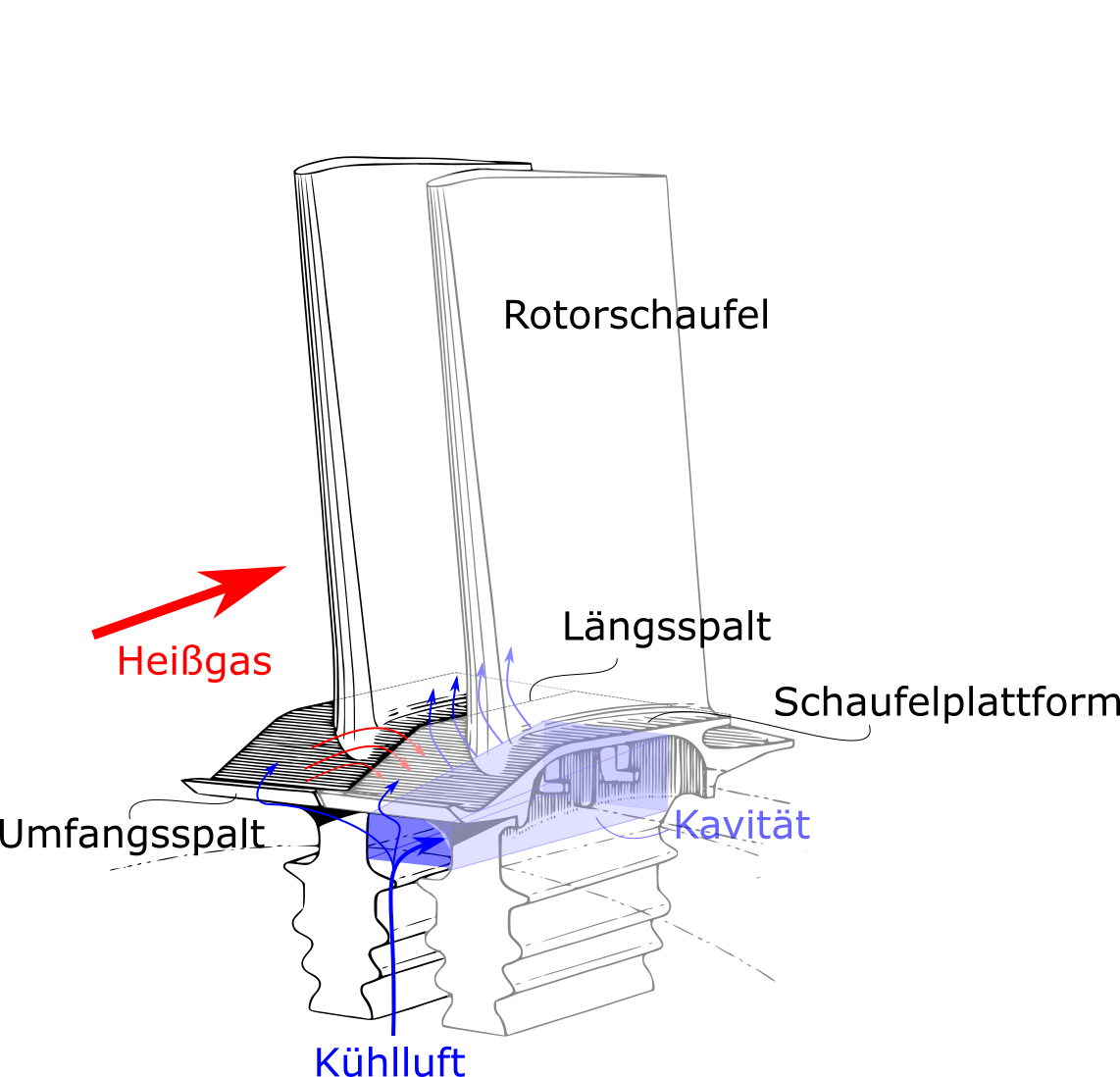Optimization of turbine platforms
Increasing the overall efficiency is a key objective in the development of future jet propulsion systems. This reduces specific fuel consumption, which not only saves costs but also reducesCO2 and NOx emissions. One way to optimize the overall efficiency is to improve individual components.
For several decades now, research has been focusing on optimizing the cooling methods of turbine blades. These are exposed to temperatures far above the melting temperature of the blade material, which is why a not inconsiderable proportion of the compressor air has to be diverted for cooling purposes. The Institute of Thermal Turbomachinery focuses its research on the optimization of existing and new cooling methods. In cooperation with renowned engine manufacturers, test benches are set up for this purpose, with which experimental data such as fluid temperatures, heat transfers or flow fields can be collected. A current focus here is on the thermal load of blade platforms.

Sub-platform cooling
In addition to the hot gas side, i.e. the cooling of the blade profile or the side wall of the blade, heat transfers on the underside of the platform are also being investigated. A new cascade test rig is currently being designed for this purpose in order to investigate the heat transfer via the lower platform area or temperature fields and flow fields within the cavity and through the various gaps. Optical measurement methods are used for both the thermal and aerodynamic investigations. The temperature distribution of outer walls can be recorded using infrared thermography (IRT) . Particle Image Velocimetry (PIV) or Laser Doppler Anemometry (LDA ) are used to measure the flow fields. Synchronous observation of these measurements is intended to provide a deeper understanding of the effects of aerodynamic phenomena on the cooling effect and the thermal load on the component.

Sources:
[1] Bräunling, Willy J. G. (2015), Aircraft Engines. 4th ed., Hamburg, Springer Verlag, ISBN 978-3-642-34538-8
[2] Rolls-Royce plc (1986), The jet engine. 5th ed., Derby, Renault Printing Co Ltd, ISBN 0902121 235


